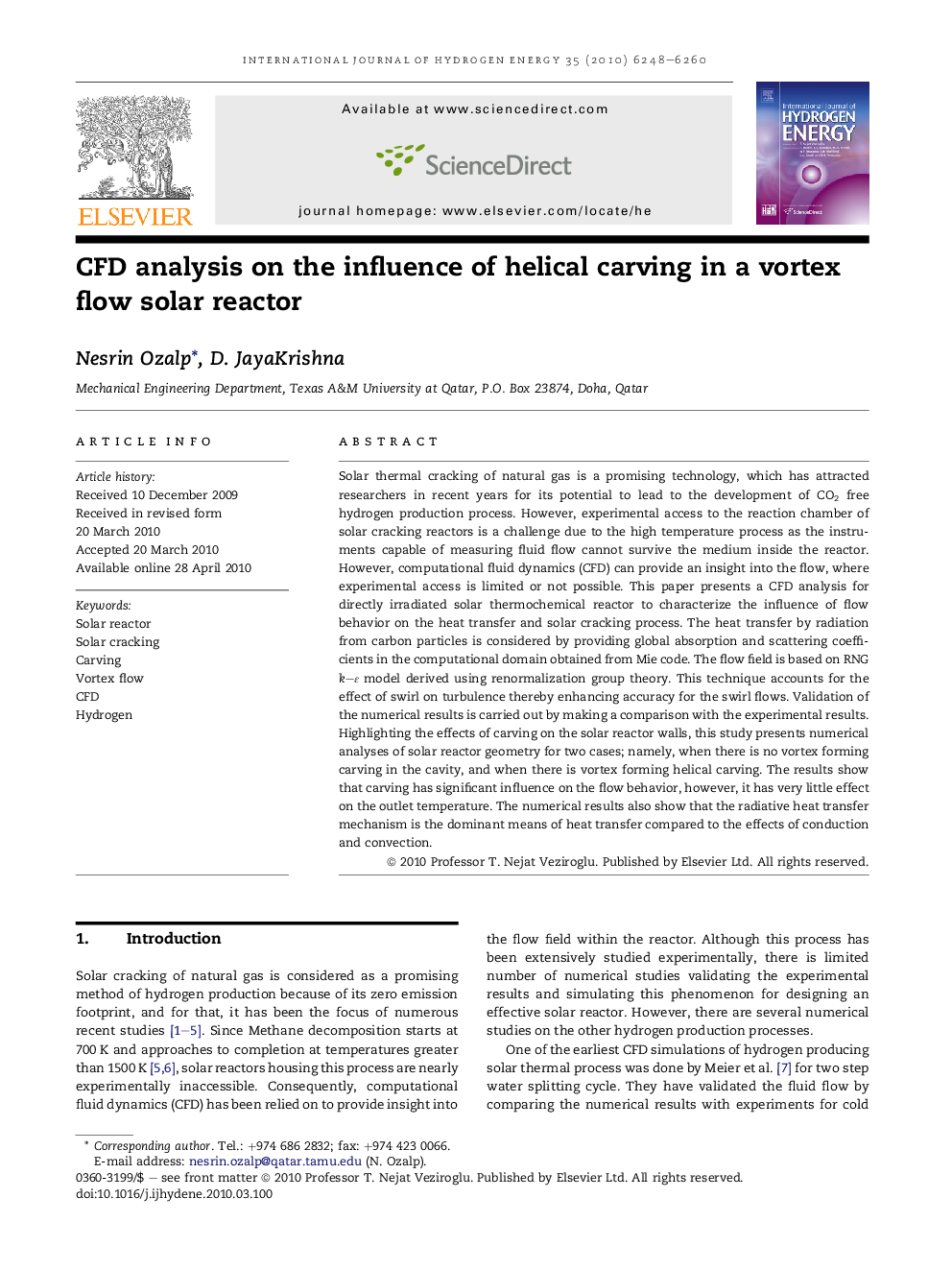| Article ID | Journal | Published Year | Pages | File Type |
|---|---|---|---|---|
| 1277087 | International Journal of Hydrogen Energy | 2010 | 13 Pages |
Solar thermal cracking of natural gas is a promising technology, which has attracted researchers in recent years for its potential to lead to the development of CO2 free hydrogen production process. However, experimental access to the reaction chamber of solar cracking reactors is a challenge due to the high temperature process as the instruments capable of measuring fluid flow cannot survive the medium inside the reactor. However, computational fluid dynamics (CFD) can provide an insight into the flow, where experimental access is limited or not possible. This paper presents a CFD analysis for directly irradiated solar thermochemical reactor to characterize the influence of flow behavior on the heat transfer and solar cracking process. The heat transfer by radiation from carbon particles is considered by providing global absorption and scattering coefficients in the computational domain obtained from Mie code. The flow field is based on RNG k–ɛ model derived using renormalization group theory. This technique accounts for the effect of swirl on turbulence thereby enhancing accuracy for the swirl flows. Validation of the numerical results is carried out by making a comparison with the experimental results. Highlighting the effects of carving on the solar reactor walls, this study presents numerical analyses of solar reactor geometry for two cases; namely, when there is no vortex forming carving in the cavity, and when there is vortex forming helical carving. The results show that carving has significant influence on the flow behavior, however, it has very little effect on the outlet temperature. The numerical results also show that the radiative heat transfer mechanism is the dominant means of heat transfer compared to the effects of conduction and convection.
